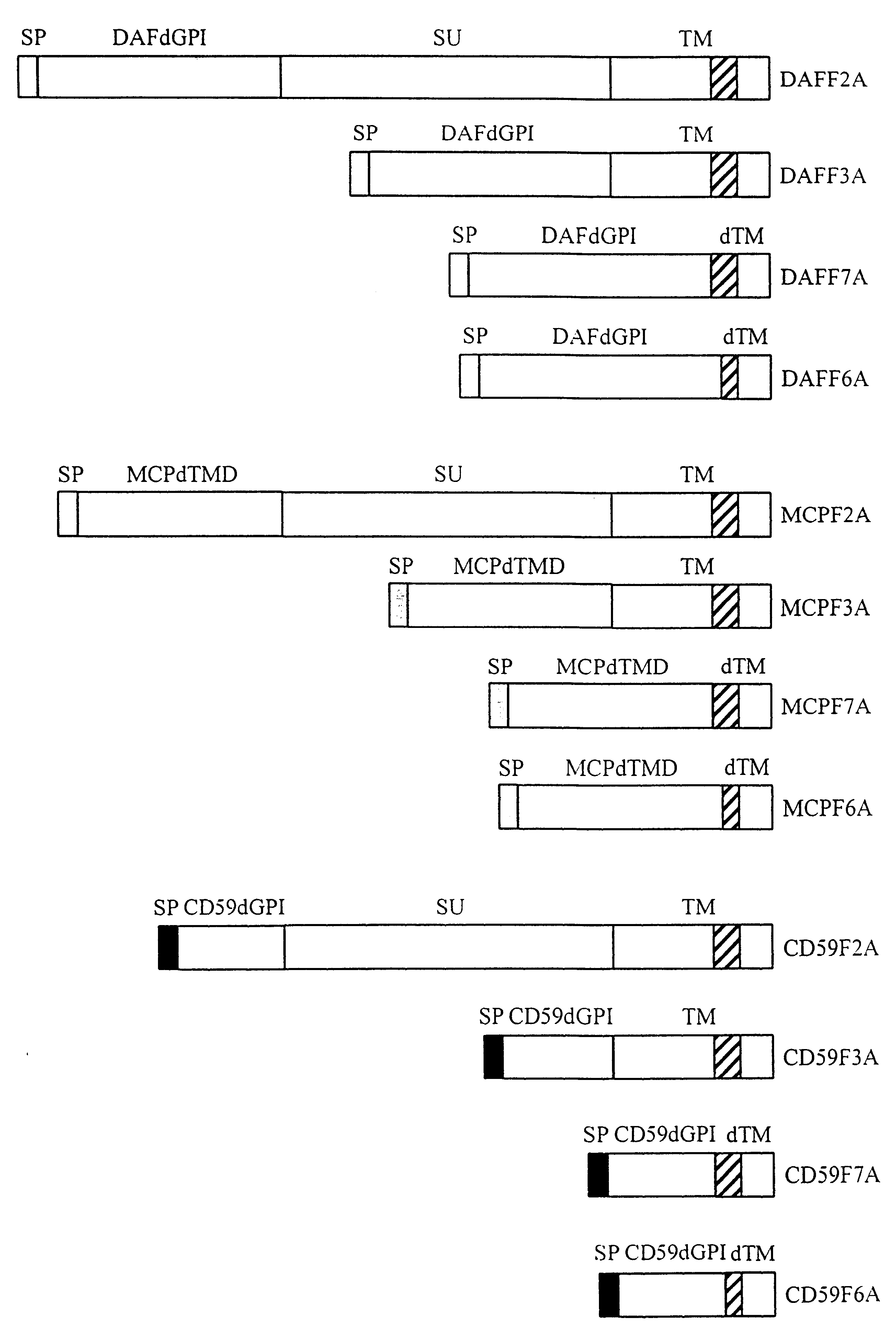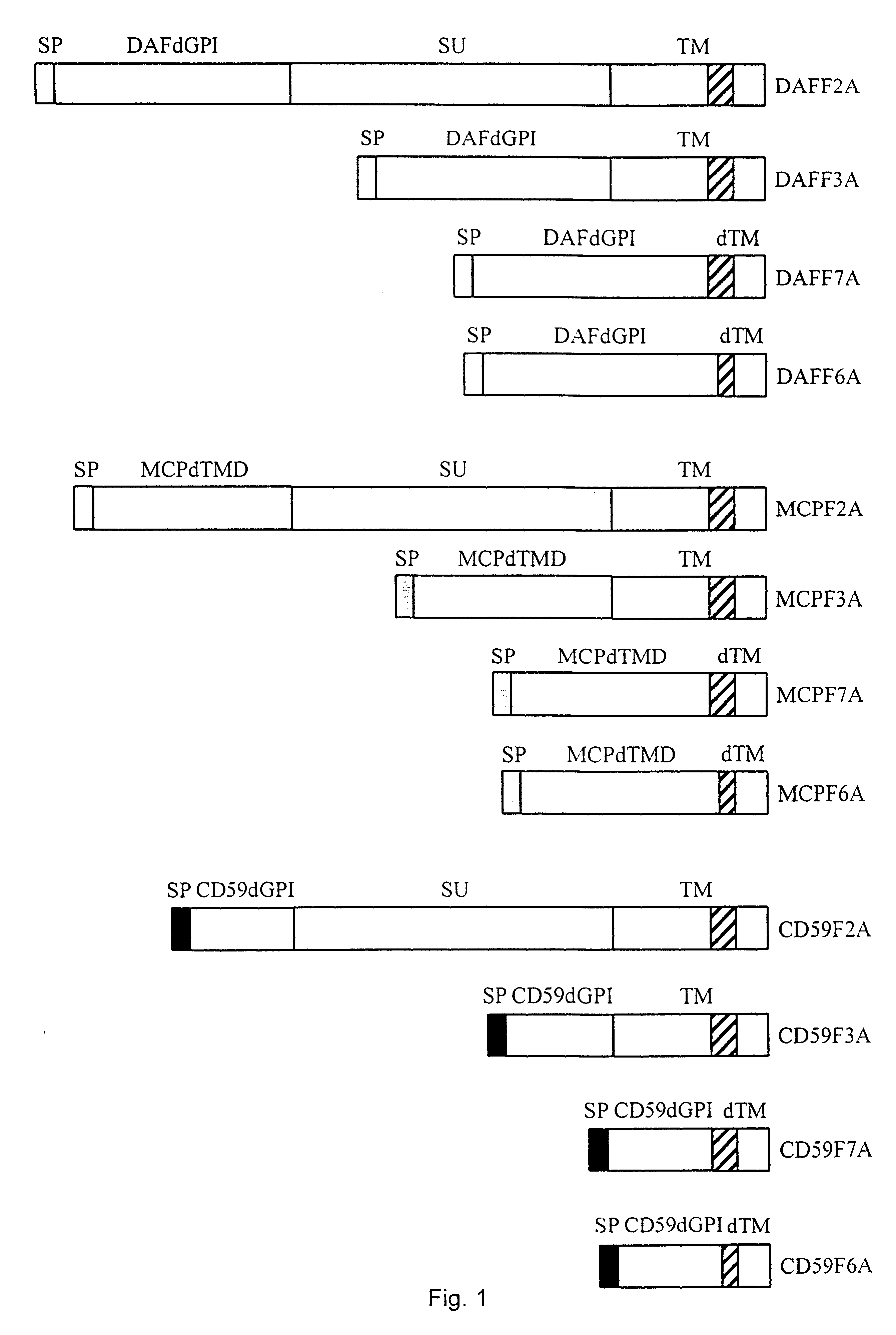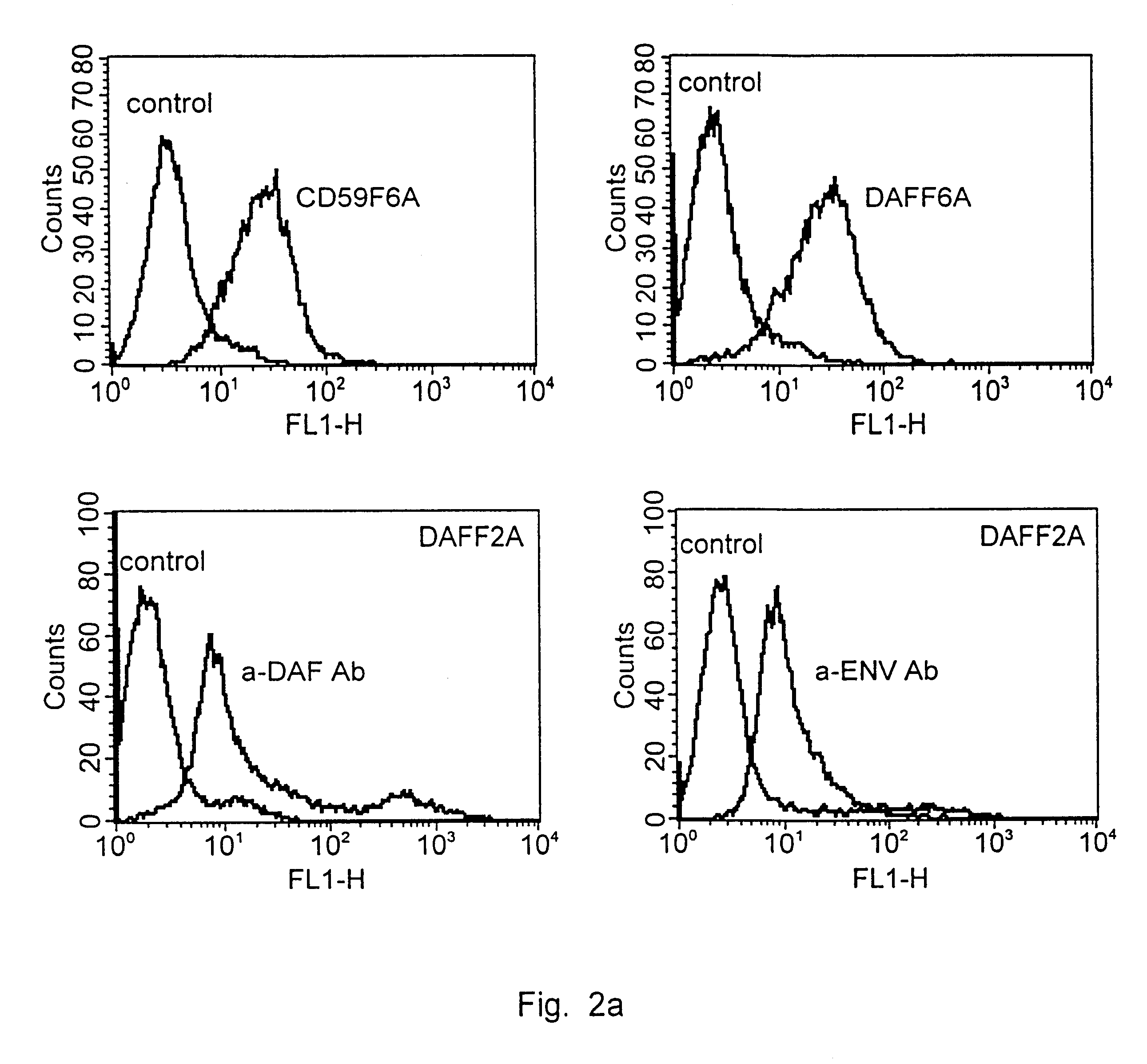Development of viruses resistant to inactivation by the human complement system
a human complement and virus technology, applied in the field of murine retrovirus biology, can solve the problems of inability to exclusively deduce the problem of complement mediated lysis, and the inability to redirect viruses to other cellular receptors
- Summary
- Abstract
- Description
- Claims
- Application Information
AI Technical Summary
Problems solved by technology
Method used
Image
Examples
Embodiment Construction
FIG. 1
Construction of fusion proteins comprising catalytically active domains of complement inactivation factors (DAF, MCP and CD59 as indicated) and different domains of retroviral env proteins (hatched: SU, white: TM; bright hatched: transmembrane domain of TM)
FIG. 2
Expression of fusion proteins can overcome complement-mediated lysis of cells
Mouse NIH3T3 cells were stably transfected with different fusion genes. Cell surface expression was confirmed by FACS analysis (a); complement stability was determined in a viability assay (b).
a) FACS analysis of transfected (thick line) and non-transfected (thin line) cells was performed using antibodies directed against the respective human complement inactivation factors.
b) Transfected and non-transfected cells were incubated with human serum samples providing active or heat-inactivated complement resistance factors. Subsequently, viability was determined by trypan blue dye exclusion assay. The relative numbers of living cells obtained from...
PUM
| Property | Measurement | Unit |
|---|---|---|
| Current | aaaaa | aaaaa |
| Electrical resistance | aaaaa | aaaaa |
| Efficiency | aaaaa | aaaaa |
Abstract
Description
Claims
Application Information
 Login to View More
Login to View More - R&D
- Intellectual Property
- Life Sciences
- Materials
- Tech Scout
- Unparalleled Data Quality
- Higher Quality Content
- 60% Fewer Hallucinations
Browse by: Latest US Patents, China's latest patents, Technical Efficacy Thesaurus, Application Domain, Technology Topic, Popular Technical Reports.
© 2025 PatSnap. All rights reserved.Legal|Privacy policy|Modern Slavery Act Transparency Statement|Sitemap|About US| Contact US: help@patsnap.com



